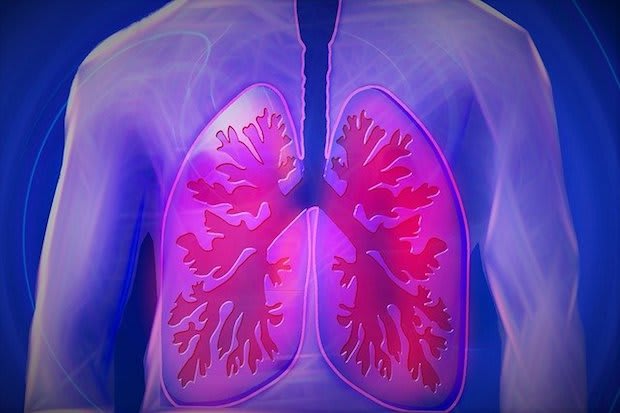Table of Contents
I. Understanding Lung Function
II. Asthma’s Effect on the Lungs
III. General Symptoms of Asthma
Understanding Lung Function
The lungs are vital organs that supply fresh oxygen to the entire body. Several conditions may affect lung function and cause detrimental problems for the body. Asthma is a chronic lung disorder that causes breathing problems, but it is important to understand how the lungs work before diving into the symptoms and treatments for asthma.
When you take a breath in, you are inhaling all of the molecules, chemicals, and gases in the air around you. The nose and mouth's mucous membranes catch any foreign matter to prevent dirt and dust from entering the lungs. Your rib cage (the diaphragm) allows you to breathe in and then flattens, allowing air to enter the lungs. The air then enters the windpipe (trachea) and branches off into the left and right bronchi. Each lung’s bronchus branch gets progressively smaller from here, the smallest airway being the alveoli, which are tiny balloon-like clusters.
When air is taken into the body, these balloon-like structures inflate and enlarge the chest cage and relax when air is moved out of the lungs. There are hundreds of millions of alveoli in the lungs, and oxygen moves across the walls of these air sacs. Oxygen is then picked up by the bloodstream and distributed to other parts of the body. Carbon dioxide and waste gases are filtered in the lungs and exhaled. [1]
Asthma occurs when the airways narrow and swell, making it more difficult to breathe into the lungs. [1] This condition can be life-threatening if left untreated, so several maintenance and emergency inhalers are available to improve breathing. These drugs include Singulair (montelukast), Symbicort Inhaler (budesonide/formoterol), or Ventolin Inhaler (salbutamol). Learn more about symptoms of asthma below. The exact cause of asthma is unknown. Asthmatic airways are in a hypersensitive state that leads to redness and swelling. Because they are hypersensitive, the airways are more prone to irritation from several different asthma triggers. If you are exposed to a trigger, the airways swell even more than normal, narrowing the space for air to move in and out of the lungs. Muscles wrap around the airways and tighten, making it increasingly difficult to breathe. For many, this is a terrifying feeling and is classified as an "asthma attack." Some common asthma triggers include allergens and cigarette or marijuana smoke. You may notice that your asthma becomes more severe when you are around certain animals. [2] There are several different types of asthma, so symptoms vary from person to person. Some people have asthma attacks infrequently, while others feel symptoms all the time. General symptoms of asthma include: Your asthma symptoms can change over time. If you notice that your asthma symptoms are worsening, you may want to schedule a doctor's appointment to check your condition. Your asthma may be worsening if you experience: There are over 25 million people in the United States with asthma. Every case of asthma is individual to the person, so symptoms and treatments may vary. [3] The types of asthma include: Adult-Onset Asthma: Asthma may not develop until you are an adult. If you manage to avoid your asthma triggers as a child or teenager, you may be exposed as an adult and experience asthma symptoms. Having a viral infection may also unmask asthma symptoms. Allergic Asthma: The link between allergies and asthma is fairly strong. It is important to note that not everyone who has allergies has asthma and vice versa. Pollen, dust, and pet dander are all common asthma triggers in certain people. Nonallergic Asthma: Asthma symptoms may flare up in extreme weather, like heat in the summer or extreme cold in the winter. Those with nonallergic asthma often suffer asthma attacks when they are sick or stressed. Occupational Asthma: Working around chemical fumes, dust, or other irritants can lead to asthma. If you already have asthma, a workplace with many airborne irritants can worsen your symptoms. Exercise-Induced: Over 90 percent of people with asthma have exercise-induced bronchoconstriction. The airways narrow as a result of physical activity. This does not have to hold you back physically, and your doctor can customize a treatment plan to allow you to exercise properly. [3] It becomes obvious fairly quickly if you are not breathing properly. Asthma symptoms can be alarming to those who are undiagnosed. Breathing changes can cause you to feel agitation, and being agitated can worsen your asthma symptoms. There is no way to prevent asthma, but it is essential to work with a doctor to make a detailed treatment plan to manage your asthma. Your doctor will initially perform a physical exam to rule out any other respiratory disorders. They will then perform two common tests to determine your lung function. A spirometry test measures how much air you can exhale after a deep breath and how fast you can breathe out. A peak flow meter also measures how hard you can breathe out, determining your narrowed bronchial tubes' condition. You may also need to seek an allergist for allergy testing, which can help determine possible asthma triggers. There are several steps involved in managing your asthma. As mentioned above, it is essential to determine your asthma triggers, especially if you have allergy-induced or exercise-induced asthma. The goal of treatment is to stop asthma attacks before they start. Avoiding your asthma triggers is important, but sometimes those triggers are inevitable. Your doctor will likely prescribe a long-term asthma control medication as well as an emergency inhaler. Long-term medications like Singulair (montelukast), Symbicort Inhaler (budesonide/formoterol), and Asmanex Twisthaler (mometasone) work by reducing the inflammation in your airways. These drugs keep asthma under control on a day-to-day basis and reduce the likelihood of an asthma attack. There are different types of these long-term medications, including inhaled corticosteroids, leukotriene modifiers, and combination inhalers. Emergency or rescue medications like Spiriva Handihaler (tiotropium bromide) or Ventolin Inhaler (salbutamol) are used for rapid symptom relief. These drugs are used during an asthma attack or exercise if your doctor recommends them. If your asthma is well-controlled, you should not have to use this type of inhaler often. If you are using it more than normal, talk to your doctor to tweak your long-term treatment plan. The content provided in this article is based on thorough research and in some cases, reviewed by a medical professional. Our goal for the information is to provide helpful, general health informational. It is not intended as a substitute for professional medical advice.
Asthma’s Effect on the Lungs
General Symptoms of Asthma

The 5 Different Types of Asthma
How is Asthma Diagnosed?

Treatment Options
